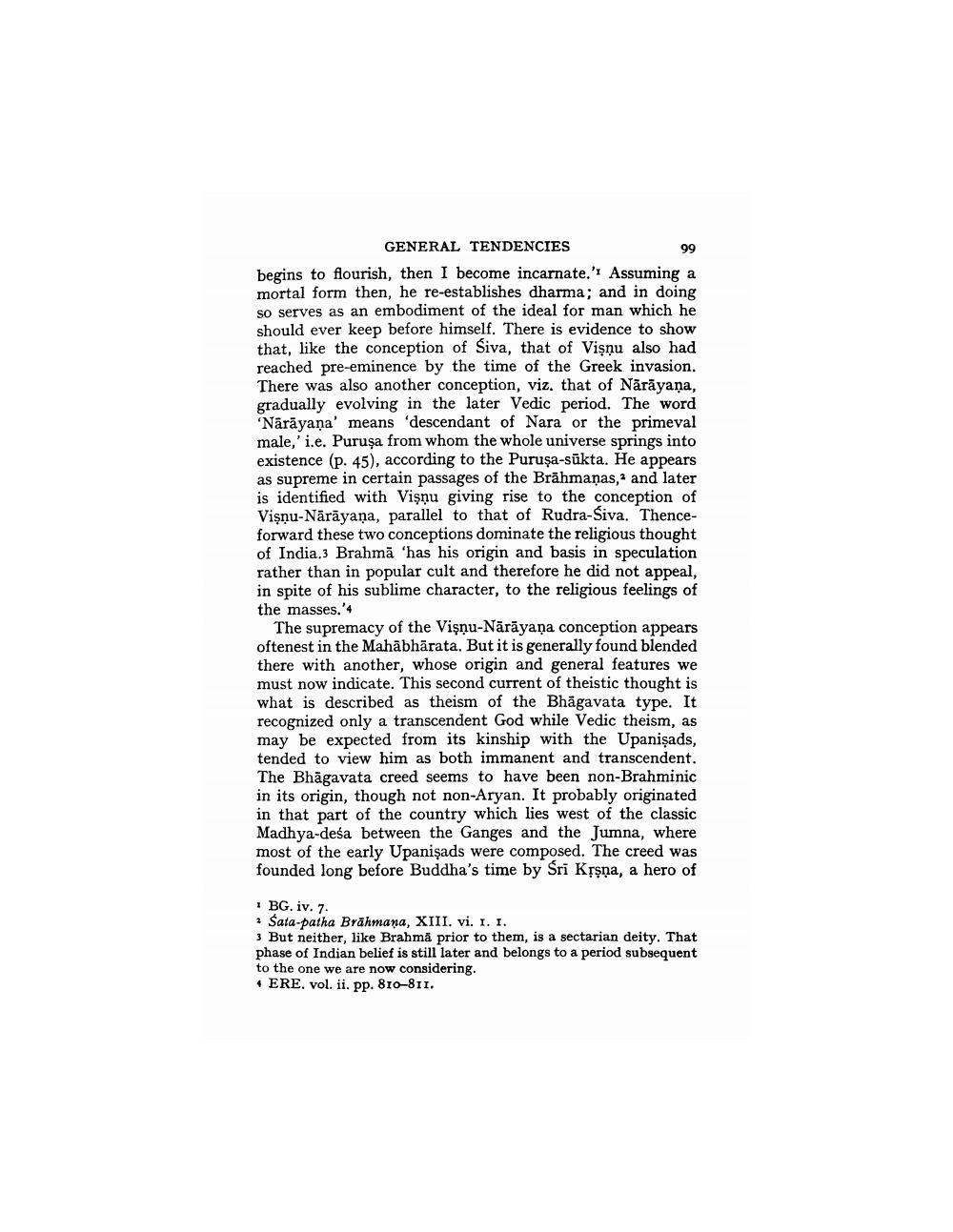________________
99
GENERAL TENDENCIES begins to flourish, then I become incarnate.'' Assuming a mortal form then, he re-establishes dharma; and in doing so serves as an embodiment of the ideal for man which he should ever keep before himself. There is evidence to show that, like the conception of Siva, that of Vişnu also had reached pre-eminence by the time of the Greek invasion. There was also another conception, viz. that of Nārāyaṇa, gradually evolving in the later Vedic period. The word Nārāyana' means 'descendant of Nara or the primeval male,' i.e. Puruşa from whom the whole universe springs into existence (p. 45), according to the Purusa-sūkta. He appears as supreme in certain passages of the Brāhmaṇas, and later is identified with Vişņu giving rise to the conception of Vişnu-Nārāyana, parallel to that of Rudra-Siva. Thenceforward these two conceptions dominate the religious thought of India.3 Brahmā 'has his origin and basis in speculation rather than in popular cult and therefore he did not appeal, in spite of his sublime character, to the religious feelings of the masses.'
The supremacy of the Vişnu-Nārāyaṇa conception appears oftenest in the Mahābhārata. But it is generally found blended there with another, whose origin and general features we must now indicate. This second current of theistic thought is what is described as theism of the Bhagavata type. It recognized only a transcendent God while Vedic theism, as may be expected from its kinship with the Upanişads, tended to view him as both immanent and transcendent. The Bhagavata creed seems to have been non-Brahminic in its origin, though not non-Aryan. It probably originated in that part of the country which lies west of the classic Madhya-desa between the Ganges and the Jumna, where most of the early Upanişads were composed. The creed was founded long before Buddha's time by Sri Krşņa, a hero of
1 BG. iv. 7. 2 Sata-patha Brāhmana, XIII. vi. I. I. 3 But neither, like Brahmă prior to them, is a sectarian deity. That phase of Indian belief is still later and belongs to a period subsequent to the one we are now considering.
ERE. vol. ii. pp. 810-811.




